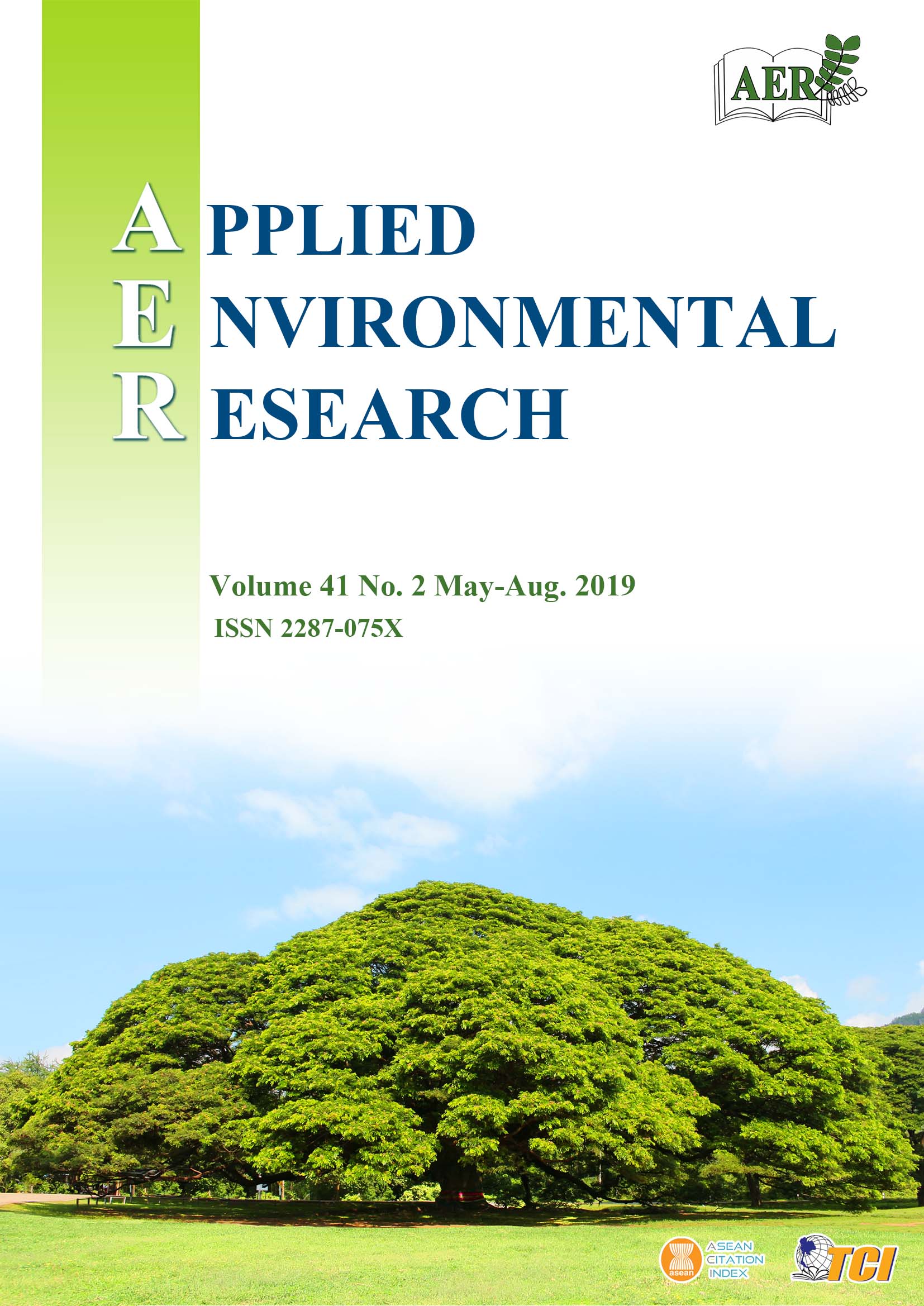Utilization of Fruit Waste for Bioethanol Production by Co-cultures of Aspergillus niger and Saccharomyces cerevisiae
Main Article Content
Abstract
The purpose of this research was to study the effectiveness of simultaneous fermentation of fruit waste with co-cultures of Aspergillus niger TISTR 3063 and Saccharomyces cerevisiae TISTR 5606 in production of ethanol. The effect of fermentation temperature on ethanol yield was also observed. Pomelo and banana peels were selected as substrates and prepared by chopping into small rectangular pieces. Fermentation of batches of fruit waste was carried out using a 250 mL Erlenmeyer flask with glucose as a control. Analysis of the composition of the fruit waste included sugar, pH, TS, VS, ash, moisture, COD and TKN. From the results, it was found that maximum yields of 90.71% and 104.90% for pomelo and banana peel, respectively, were achieved at a temperature of 40°C within 24 h. The analysis also showed that fermentation temperature affected ethanol yield. When the fermentation temperature was raised from 30°C to 40°C, maximum ethanol yield from pomelo peel fermentation with 10% of inoculum was increased from 73.86% to 90.71%, significant at p-0.05 Maximum yield from banana peel fermentation showed a similar trend. This study establishes the potential for upgrading fruit wastes such as pomelo and banana peels as high value substrates for ethanol production. Pomelo peel in particular shows high potential as a substrate for ethanol fermentation at 40°C for 24 h, with inoculum of 10% (w/w) of each fungus and yeast.
Article Details

This work is licensed under a Creative Commons Attribution-NonCommercial 4.0 International License.
Published articles are under the copyright of the Applied Environmental Research effective when the article is accepted for publication thus granting Applied Environmental Research all rights for the work so that both parties may be protected from the consequences of unauthorized use. Partially or totally publication of an article elsewhere is possible only after the consent from the editors.

